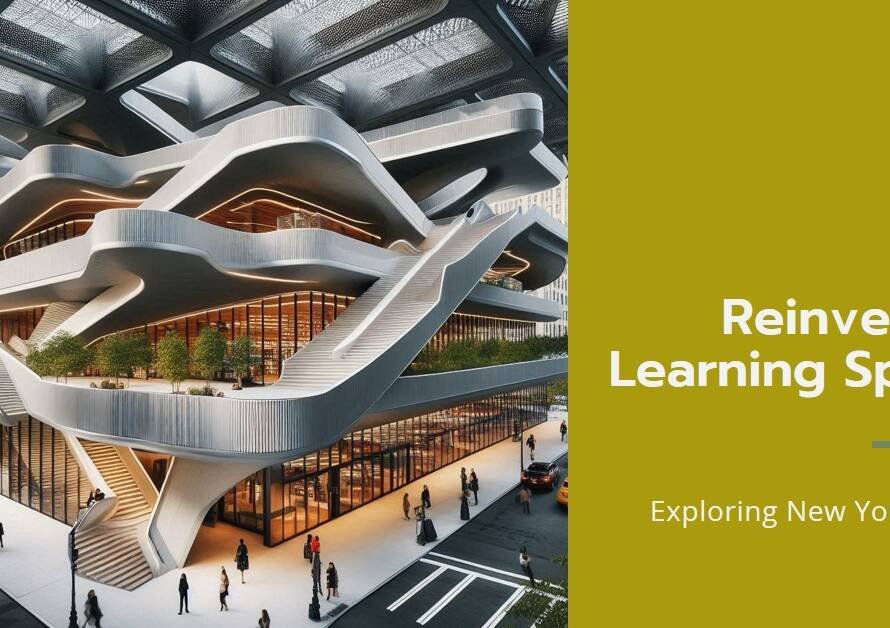
Table of Contents
Defining architectural innovation in the modern era
The definition of architectural innovation has evolved significantly in the modern era. Traditionally, architecture was seen as the practice of designing and constructing buildings with aesthetic appeal and functional efficiency. However, in the 21st century, it encompasses so much more than just physical structures. Architectural innovation now includes concepts such as sustainable design, smart technology integration, and community-centric planning.
What sets architectural innovation apart in the modern era is its focus on pushing boundaries and challenging conventional norms. Architects are no longer limited to traditional materials and construction techniques; instead, they embrace cutting-edge technologies and unconventional designs to create truly transformative spaces. This can be seen in iconic buildings like The Shard in London or the CCTV Headquarters in Beijing, which not only redefine city skylines but also push the boundaries of what is possible architecturally.
Moreover, architectural innovation goes beyond creating visually stunning structures; it seeks to address pressing societal issues such as climate change, urbanization challenges, and social inequality. Architects are increasingly embracing sustainable practices like green building materials usage, energy-efficient design strategies, and passive heating/cooling systems. They also prioritize inclusivity by designing spaces that promote accessibility and cater to diverse needs.
In conclusion, architectural innovation today encompasses more than just physical buildings – it embodies technological advancements, sustainable practices, and social consciousness. By pushing boundaries and reimagining what is possible architecturally while addressing societal challenges head-on, architects are shaping a built environment that is both practical for present needs while being adaptable for future generations.
Historical context: Evolution of architectural innovation
The evolution of architectural innovation is deeply rooted in the historical context of different civilizations and their unique approaches to building. From ancient Egypt’s awe-inspiring pyramids to Rome’s intricate aqueducts, each era has contributed its own ingenuity to shaping the built environment. However, it was during the Renaissance period that architectural innovation took a significant leap forward. The rediscovery of classical architecture and the application of mathematical principles led to the creation of stunning structures such as Brunelleschi’s Dome in Florence and Palladio’s Villa Rotonda.
Fast forward to modern times, and we find ourselves amidst a digital revolution that has redefined architectural innovation once again. With advancements in technology, architects now have access to tools like 3D printing and parametric design software, enabling them to push boundaries and create unimaginable forms. Moreover, sustainability has become a driving force for innovative architectural practices, with eco-friendly materials and energy-efficient designs taking center stage. Today’s architects are no longer confined by traditional techniques; instead, they strive for groundbreaking solutions that address pressing issues such as climate change and urbanization. In this ever-evolving landscape, one thing remains certain: architectural innovation will continue to shape our world for generations to come.
Characteristics of architectural innovation today
Architectural innovation today is marked by several distinctive characteristics that set it apart from traditional approaches. One key characteristic is a shift towards sustainability and eco-conscious design. As the world becomes more aware of environmental concerns, architects are increasingly incorporating green technologies and materials into their designs. This includes using renewable energy sources, creating buildings that are energy-efficient and utilizing sustainable materials like recycled steel or bamboo.
Another notable characteristic of architectural innovation today is the integration of technology and smart systems into building design. The advancement of digital technology has opened up new possibilities for architects to create spaces that are not only aesthetically pleasing but also highly functional. Smart buildings equipped with sensors, automation systems, and artificial intelligence can optimize energy usage, improve safety measures, and provide a better user experience.
Lastly, architectural innovation in the modern era places greater emphasis on social impact and community-centered design. Architects today recognize the importance of designing inclusive spaces that foster connection, well-being, and accessibility for all individuals. This means considering factors such as universal design principles, prioritizing inclusivity for people with disabilities or different cultural backgrounds, and engaging with local communities throughout the design process to ensure their needs are met.
With sustainability at its core, integrated technology solutions driving efficiency gains, and a focus on social impact – architectural innovation today represents an exciting leap forward in shaping our built environment for a better future.
Case studies: Examples of groundbreaking architectural innovations
One example of groundbreaking architectural innovation is the design of the Burj Khalifa in Dubai. Standing at a staggering height of 828 meters, it is currently the tallest building in the world. The architects behind this project had to think outside the box to create a structure that not only reached unprecedented heights but also withstood extreme winds and temperatures. The innovative use of a buttressed core, along with specially designed cladding and an intricate structural system, allowed for this architectural marvel to become a reality.
Another remarkable example of architectural innovation can be seen in the Japan Pavilion at Expo 2000 in Hanover, Germany. Designed by Shigeru Ban, this temporary structure showcased his unique approach to sustainable architecture. The pavilion was constructed using paper tubes filled with recycled wood fiber as its primary building material. This unconventional choice displayed Ban’s commitment to environmental preservation while also challenging traditional notions of construction materials. Through ingenuity and resourcefulness, he demonstrated that even unconventional materials can be used effectively and sustainably in architectural design.
These case studies exemplify how architectural innovation pushes boundaries and opens up new possibilities for design and construction techniques. By thinking creatively, architects have been able to solve complex problems and create structures that inspire awe and admiration around the world. These examples remind us that innovation is not limited by constraints or convention – instead, it thrives when we embrace new perspectives and challenge established norms in pursuit of groundbreaking solutions.
Impacts and benefits of architectural innovation
Architectural innovation is a driving force behind the transformation of our built environment. It encompasses the advancements in technology, materials, and design that shape the structures we inhabit. One of the most significant impacts of architectural innovation is its ability to create more sustainable and environmentally friendly buildings. With a growing awareness of climate change and resource scarcity, architects are using innovative techniques such as green roofs, passive heating and cooling systems, and renewable energy sources to minimize their ecological footprint.
Additionally, architectural innovation has the potential to greatly improve our quality of life. Buildings designed with user-centric principles in mind can enhance comfort, health, and productivity. For example, daylighting solutions allow natural light to flood into spaces, reducing reliance on artificial lighting and creating a more pleasant environment for occupants. Intelligent building systems equipped with advanced sensors can optimize energy usage in real-time and adjust conditions based on occupant preferences. By considering these factors during the design process, architectural innovators are changing how we experience our surroundings for the better.
Overall, architectural innovation holds immense potential for positive societal impacts by addressing environmental concerns while improving human well-being. As it continues to evolve alongside technological advancements and changing social needs, we can expect even greater benefits from this field in shaping future cities that prioritize sustainability and livability like never before. Consequently, it is essential that architects push boundaries and embrace innovations to create a built environment that not only meets our current needs but also builds resilience for future generations
Challenges and limitations in implementing architectural innovation
Implementing architectural innovation can be a challenging and complex process. One of the main challenges is the resistance to change within organizations. Many businesses have long-established structures, processes, and systems in place that are resistant to disruption. Introducing architectural innovation requires breaking away from these established norms and convincing stakeholders of the benefits and value it can bring.
Another limitation in implementing architectural innovation is the lack of resources and expertise. Developing and implementing new architectural designs often requires significant investments in research, development, and technology infrastructure. This may be a considerable burden for small or resource-constrained organizations that do not have access to adequate funding or specialized skills. Additionally, finding individuals with the knowledge and experience required to handle complex architectural projects can be difficult, further hindering implementation efforts.
Overcoming these challenges requires a shift in mindset towards embracing change and investing in resources and talent development. Organizations need to proactively create an environment that fosters innovation by encouraging experimentation, providing training opportunities, and supporting risk-taking initiatives. By doing so, businesses can unleash their full potential for architectural innovation while reaping its many benefits such as improved efficiency, differentiation from competitors, and enhanced customer satisfaction.
Conclusion: The future of architectural innovation
To conclude, the future of architectural innovation holds immense potential. With advancements in technology and a growing emphasis on sustainability, architects have a unique opportunity to shape the built environment in exciting new ways. We can expect to see more integration of green design principles, such as passive heating and cooling systems and the use of renewable materials.
Additionally, emerging technologies like virtual reality (VR) and augmented reality (AR) are poised to revolutionize the way architects design and communicate their ideas. These tools allow for immersive experiences that enable clients to visualize projects before they are even built, helping to bridge the gap between imagination and reality.
Furthermore, societal shifts will continue to shape architectural innovation. As cities become increasingly crowded, architects will need to find innovative solutions for housing shortages and urban development challenges. This may involve exploring modular construction or designing multi-purpose spaces that can adapt to different needs over time.
Overall, the future of architectural innovation is bright with possibilities. Architects have an essential role in shaping our cities and creating spaces that enhance quality of life while addressing environmental concerns. By embracing new technologies and pushing boundaries with creative thinking, architects will continue to redefine what is possible in the world of design.


